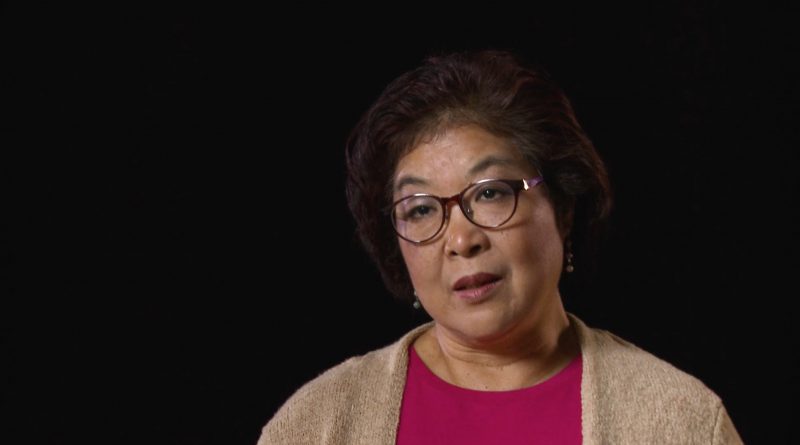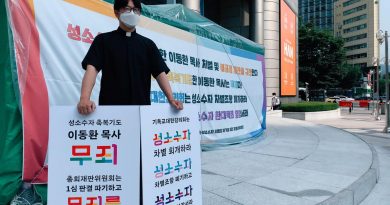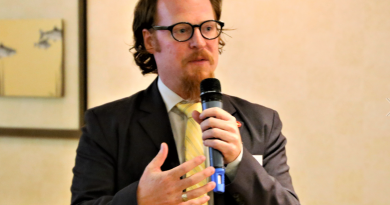The Context of the Recent Spate of Anti-Asian Violence in the US
Interview with Rev. Unzu Lee,
Regional Liaison for East Asia in World Mission of the Presbyterian Church (USA)
1. Please tell us the context of the recent spate of anti-Asian violence in the US. Is this a new phenomenon connected to the COVID-19 pandemic or is it a part of older anti-Asian hate that has re-emerged?
What we are seeing is only a resurgence of the pre-existing anti-Asian hate that has been part of the US social fabric. COVID simply worked as a trigger, providing a fertile context for anti-Asian hate to reemerge because the disease, COVID 19, was racialized as Asian(Chinese). In order to understand anti-Asian hate in the US, it is critical that we understand what race is, what racism is, and how race and racism function in the US context.
Race is entirely a social construct and the United States as a nation is a racialized country based on this fabricated concept. This means, whoever that lives in the US is racialized whether you want it or not. Europeans who migrated to the land now known as the United States used race as a basic category to organize all of its systems—namely, economic, political, educational, and law enforcement, to name a few. These systems entitled those considered as racially white with rights and privileges while denying them to all who were not considered white. This racial division is interwoven throughout the fabric of US society. Racism, therefore, is not just about prejudice. A racial prejudice becomes racism when it is supported by systemic power.
The United States is the only country that had a legal system of race-based slavery. When institutional slavery came to an end, the white establishment needed another source of cheap labor to replace ‘freed’ slaves who had worked for them for free. It is fair to say that the transcontinental railroad would not have been completed without the tens and thousands of Chinese contracted laborers to the white establishment. Perceived to be a threatening contaminant, the term ‘yellow peril’ came to describe their fear of the Chinese and the US congress passed the Chinese Exclusion Act in 1882. Over time, this stereotype of the Chinese (Asians) as ‘yellow peril’ became inculcated in the socio-cultural psyche of the US populace. Violent attacks on Asians based on this fear have ebbed and flowed since that time, but now anxiety around the pandemic has translated into a new crescendo of increased attacks on Asians. When Mr. Trump called COVID-19 the “China virus” and “kung flu,” he triggered the fear of the ‘yellow peril ’ in the psyche of US society.
2. Based on news reports Koreans might assume that most of the violence is coming from African Americans against Asians. Is that the case or is the reality more complex?
I do not dispute that some African Americans perpetuate violence against Asians, and tension exists between these two people of color communities, But, when put in context, such tension is bound to exist in the US racial hierarchy built on the mis-construed assumption of white superiority. So, when we look at the current state of anti-Asian violence within the confines of the Black-Asian conflict, we not only do disservice to everybody who suffers from racism but we actually serve the interests of Whites who benefit from the very racist social structure.
What happened to Korean immigrants in Los Angeles in 1992 can bring some light to this point that I am trying to make. On March 3, 1991, an innocent bystander caught on his camera the vicious beating of Rodney King, an unarmed African American, by four white LA police officers. When his footage was aired all over the country, people were aghast. The case went to court, and the four officers were tried. Most people, especially those in Black communities who had been victims of police brutality for years believed that this time justice would be rendered because there was ocular evidence. To everyone’s dismay, however, the officers were all acquitted, and Los Angeles erupted in fury.
One ethnic group that was caught up in this fury was the Korean community. According to one estimate, roughly half a billion dollars’ worth of damage was borne by Korean-owned businesses. Koreans lost much more than businesses. They lost their American dream. LAPD abandoned Koreans and positioned themselves in Westwood, a white neighborhood. Then the message that the media sent out made it appear as if this whole thing happened because of the conflict between the Blacks and Koreans.
Pitting different people of color racial groups against each other helps sustain racial hierarchies and keep white dominance on top. Asians have been stereotyped as a model minority, and this myth has been used to pit Asians against other racial groups, most notably Blacks. Asians have also been typecast as the buffer to absorb Black anger at a racist system so that White establishment can avoid responsibility for a racist system. I want to make one thing clear. While there is tension between Blacks and Asians, the Black-Asian solidarity is also strong.
3. We also see that while there are some Asian men who are victims of this violence, most victims are Asian women, especially in the case of the Atlanta shooting. Is there a gender component to this anti-Asian hate?
I have read that Asian American women are harassed 2.3 times more than Asian American men. Anti-Asian hate definitely has a gender component. The Atlanta shootings have indeed revealed some very important truths about the way women of Asian descent experience racism in the U.S because of their gender.
The young white man who committed the murders claimed he had a “sexual addiction”, a dubious concept without scientific basis. When we unpack this, we learn that: 1. He externalized his sexual desires as an involuntary sexual addiction marking women as the threat; 2. He perceived the women to be the threat because they inflame his supposed addiction; 3. He decided to eliminate the threat; 4. He targeted three Asian spas in a killing spree because he presumed that all Asian women who worked at massage parlors were prostitutes; and 5. Eight persons of Asian descent were killed, six of whom were women. In short, he succeeded in eliminating his imagined threat.
The legacy of hypersexualizing Asian women is deeply rooted in the US history. Even before the Chinese Exclusion Act that was signed into law in 1882, there was an overriding perception that Chinese women were all prostitutes. Contending that Chinese women’s laxed sexuality caused a deep moral concern, in 1875 Representative Horace f. Page introduced the Page Act to Congress to forbid any Chinese considered “undesirable” to enter the US. Since its passage and until now, women of Asian descent have been typically typecast as exotic temptresses who threaten the morality of white men. What happened in Atlanta replayed this narrative.
I want to bring our attention to one more dimension of this reality with which we are grappling, and that is the role of evangelical Christianity. Overall, Christianity has had a very troublesome history in relation to the body and sexuality. In addition, a recent study has named white Christian nationalism as being most responsible for shaping xenophobic and racist views around Covid-19. The white man, the killer, most likely grew up in a Baptist church as his father is a Baptist minister. I cannot help wondering how his religious upbringing may have contributed to his actions.




